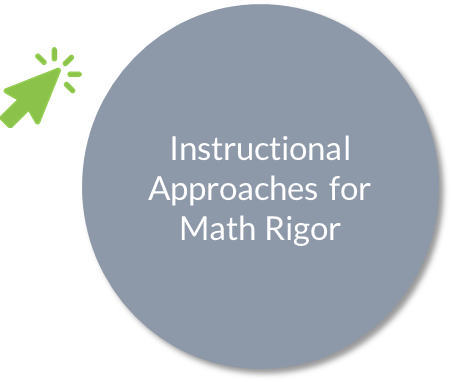Targeting aspects of rigor in math instruction
Achieving rigor requires us to balance conceptual understanding, procedural skill and fluency, and real-world, problem-solving situations.
Targeting aspects of rigor in math instruction
Math teachers, spurred by new standards, are striving to increase the rigor of their instruction. But…what exactly is rigor?
According to the standards, achieving rigor requires us to teach math in a way that balances students’ conceptual understanding, their procedural skill and fluency, and their ability to apply what they know and are able to do to real-world, problem-solving situations.
But this is easier said than done, especially when most of us learned math through a less balanced approach that favored rules and tricks over deep understanding. In light of the standards, many teachers have found it necessary to expand their instructional practices to support student learning across all three aspects of rigor.
| Conceptual Understanding |
Procedural Skill/Fluency | Application |
|---|---|---|
| Understand Reason Explain Interpret |
Fluency Read/Write Evaluate |
Word problems Real-world scenarios Multi-step problems |
The language of the standards helps us identify which aspect of rigor is being targeted, as shown in this chart. Once you understand that, you can identify the most effective instructional practices to employ. Different standards demand different ways of learning math—conceptual, procedural, or application—and that means our teaching needs to adapt to meet those demands, too.
“Different standards demand different ways of learning math—conceptually, procedurally, or application-based—and that means our teaching needs to adapt to meet those demands, too.”
Sound tricky? We created this guide to help spark ideas for how to structure your instructional approach based on the aspect of rigor. The guide might also come in handy if you discover that material didn’t quite “click” for students the first time around—it might help you re-think your approach or choose a different strategy to engage students with the same math topics in a future lesson.
Watch this video of a 5th grade math lesson that targets the conceptual and application aspects of rigor, aligned to 5.NF.B.4a :
Interpret the product (a/b) × q as a parts of a partition of q into b equal parts; equivalently, as the result of a sequence of operations a × q ÷ b.
You’ll see how the teacher employs a variety of instructional approaches—multiple representations, discussion and reflection, and problem-solving opportunities—to target the aspects of rigor within this standard.
Let Haady, your virtual ANet coach, guide you through a free, interactive learning experience on understanding mathematical rigor.




